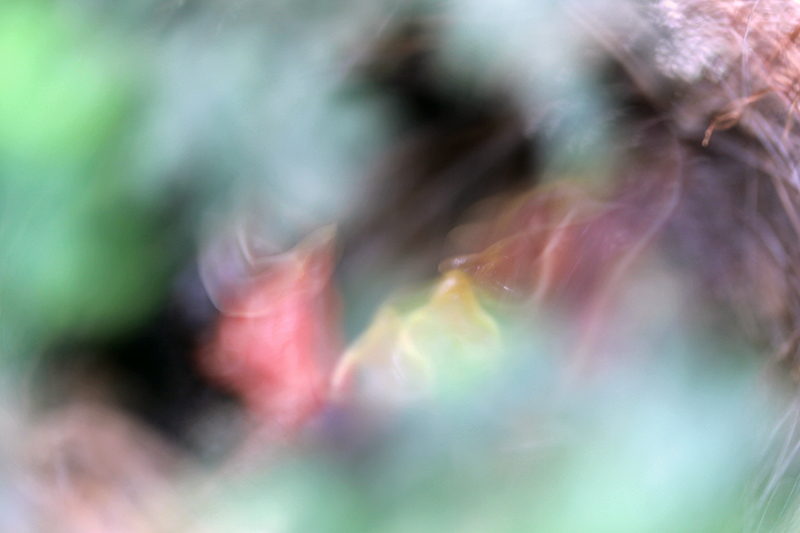March 4th, 2015 §
This morning I put on my botanist hat and headed to the east side of town to begin one of the year’s biggest assignments: Locate, identify, harvest, press, and mount 35 native British plants as herbarium specimens. It sounds like a bit of a faff, I know, but it’s actually proven quite challenging for many reasons, the first being that I am not familiar enough with the local flora to identify as many things offhand as I could back in the U.S. So I haul wildflower and plant i.d. books into the field with me, but those are no real picnic to decipher. Second, so many plants that one might believe are native are, in fact, introduced. A prime example is the little snowdrop, Galanthus nivalis, which to me and many others is emblematic of late winter in British woodlands. However, it was introduced in the 16th century and then naturalized until it was found in the wild in the 18th century.
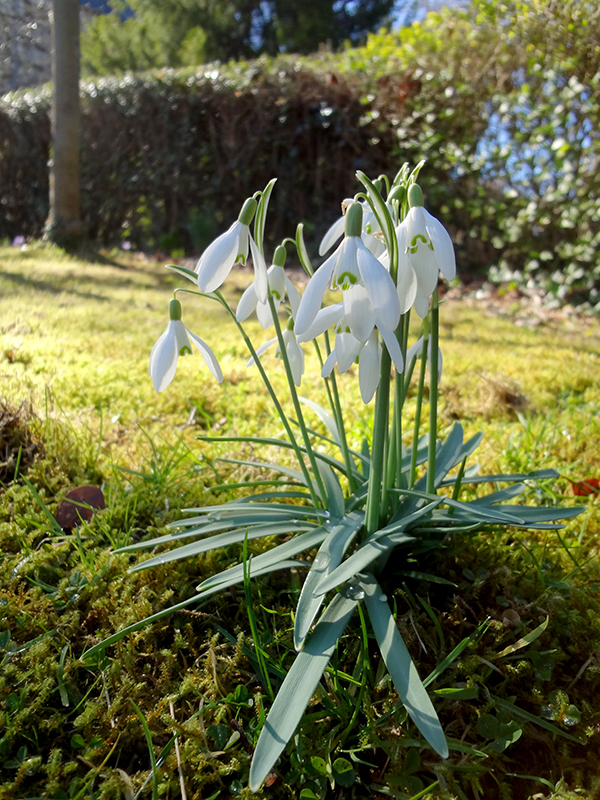
Finally, the time of year is a challenge as March is just too early for most plants to be actively growing let alone flowering, which limits what I can successfully identify. The assignment is due in May, and it takes weeks to properly dry herbarium specimens so they can be stored without rotting.
So I figured I’d better get cracking, even with these odds against me. I packed a picnic lunch with a roast pork and chutney sandwich, filled a flask of hot tea, chucked my secateurs into my backpack and headed in the direction of Duddingston Loch, a lake and bird reserve south of Arthur’s Seat.
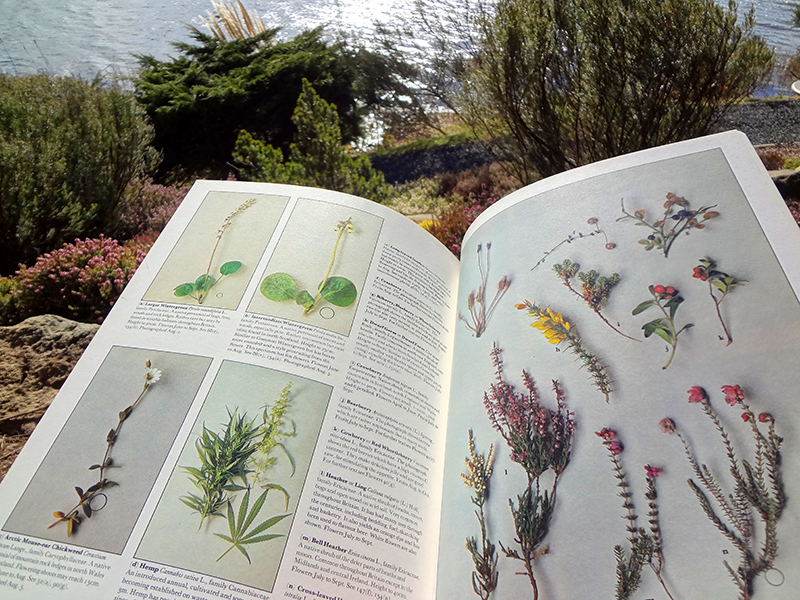
I tromped some woodland on the way, and cut a bits of holly and ivy (yet unidentified) and Scotch Broom (Cytisus scoparius) before I stopped off at Dr. Neil’s Garden to eat my lunch overlooking the beautiful loch. The Pentland Hills in the distance were still covered in yesterday’s snow, and the streaming sun, shimmering water, and myriad swooping and singing birds made for a perfect picnic.
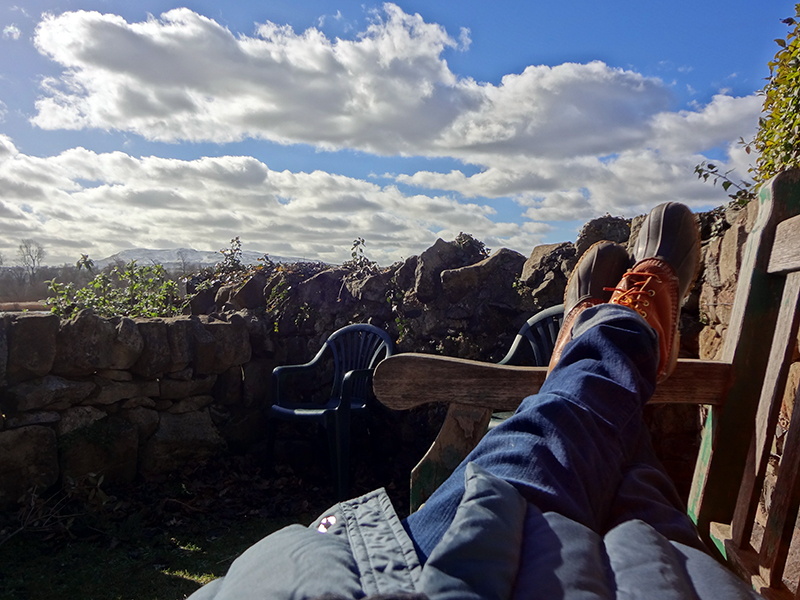
I made my way up the garden to a sheltered nook with a great wooden bench. It was warm in the sun, and I lay down. Watching the clouds skid across the sky made me so mellow I fell asleep for at least an hour. I can’t remember the last time I slept outside—I was entirely relaxed.
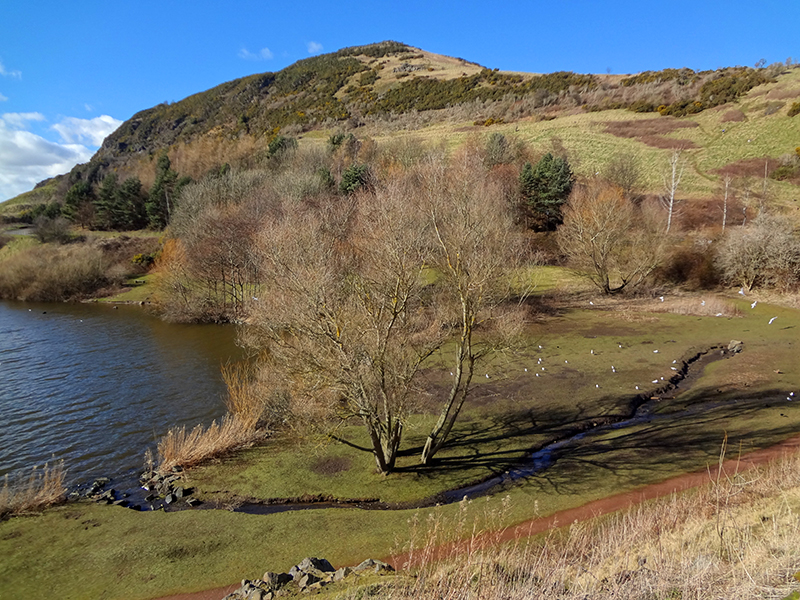
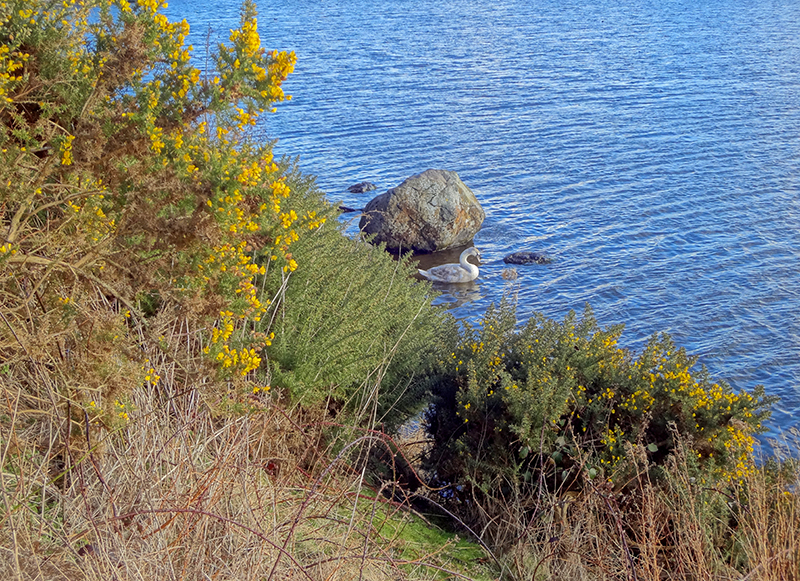
When I woke up I hopped a stone wall and ambled around the loch, climbing amongst the spiney gorse (Ulex europeaus), which of course I cut for my assignment despite being prickered to bleeding. I scrambled up some rocks and found myself on an overhang high above the loch, discovering a beautiful feather along the way. Pheasant?
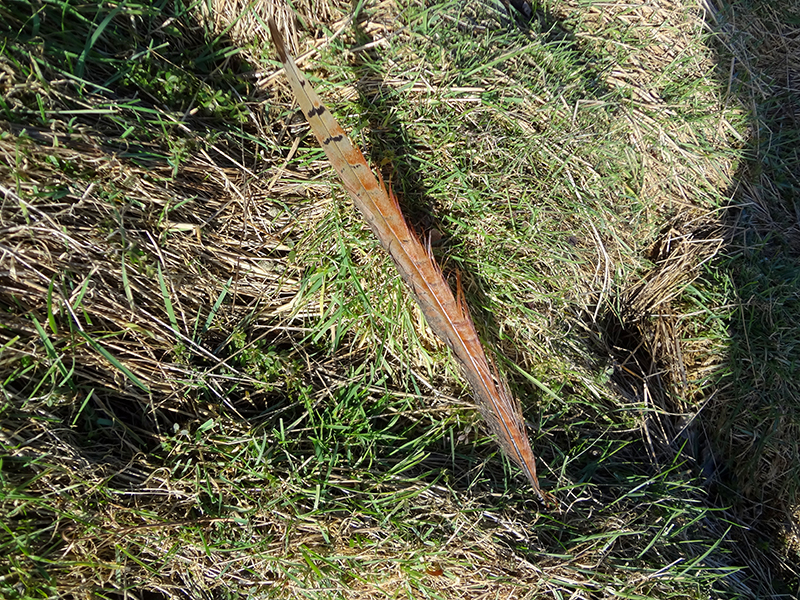
The top of the hill was a great spot to watch the geese, swans, seagulls and other little birds swim below.
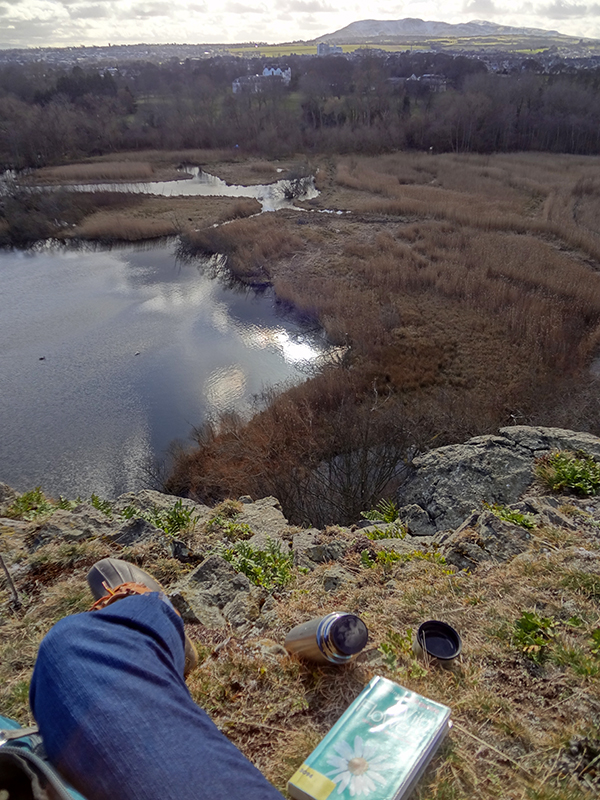
As I was drinking my tea I saw two huge grey herons fly side by side to their nest in a brushy little peninsula. It was an amazing sight, something I’d never seen before—a pair of herons on the nest. It’s egg-laying time. Wish I’d had binoculars!
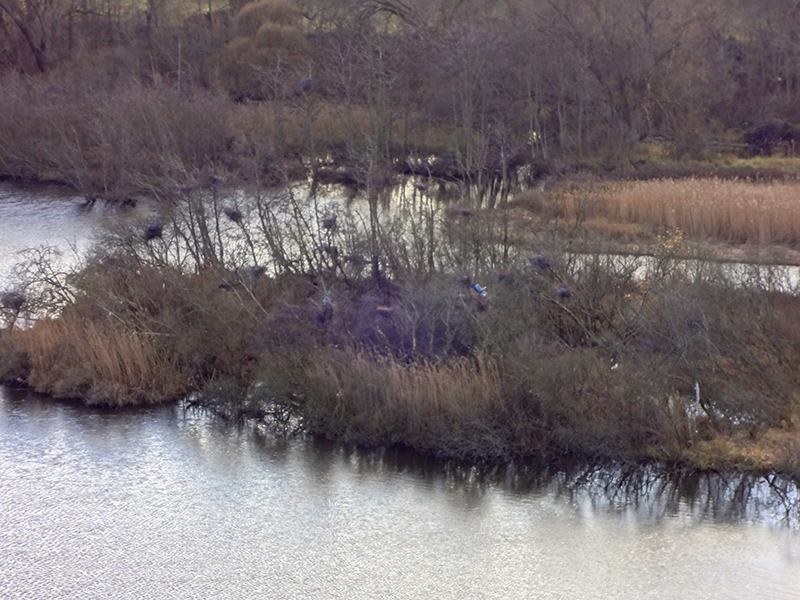
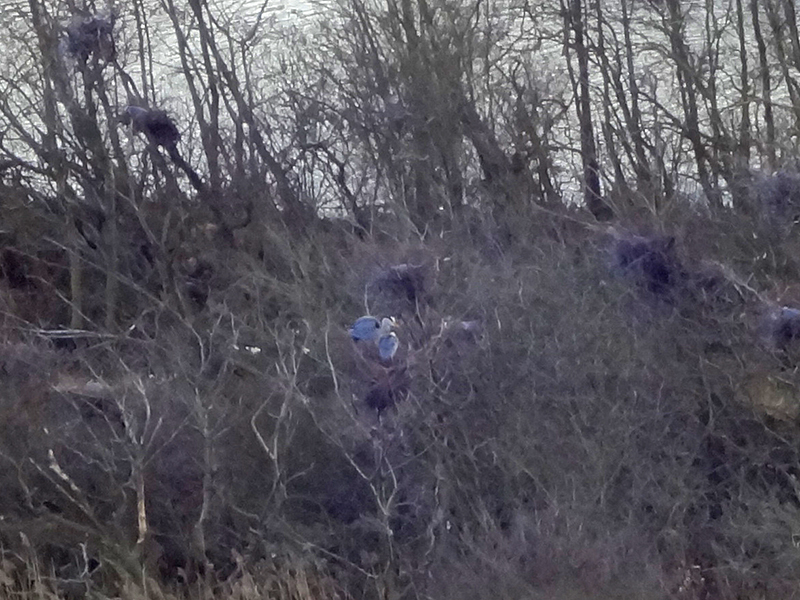
So it turns out that the life of a plant collector comprises a little hiking, lots of fun thinking about plants, a picnic, a nap in the sun, and some birdwatching. It’s a good life, and added up to one of my favorite days yet in Edinburgh.

July 24th, 2014 §
The year’s first wren nesting didn’t work out too well. But the wrens are back, this time having set up a much more concealed nest in one of my planters on the front porch. I am doing my part, this time, by surrounding the planter with a fortress of porch chairs and ladders, all positioned to keep Tucker away. Thus far it’s working. I’ve got four baby wrens growing up on the porch. Their nest is so deep in the planter that it took a flashlight to get this shot.
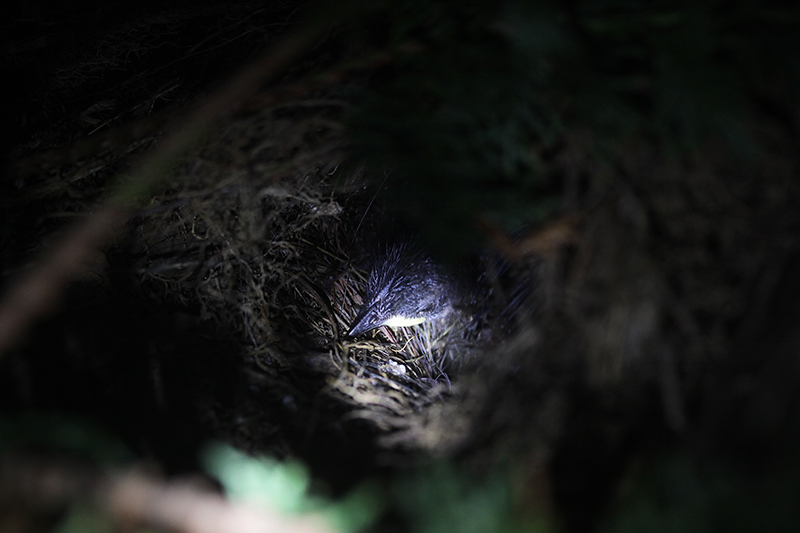
June 9th, 2014 §
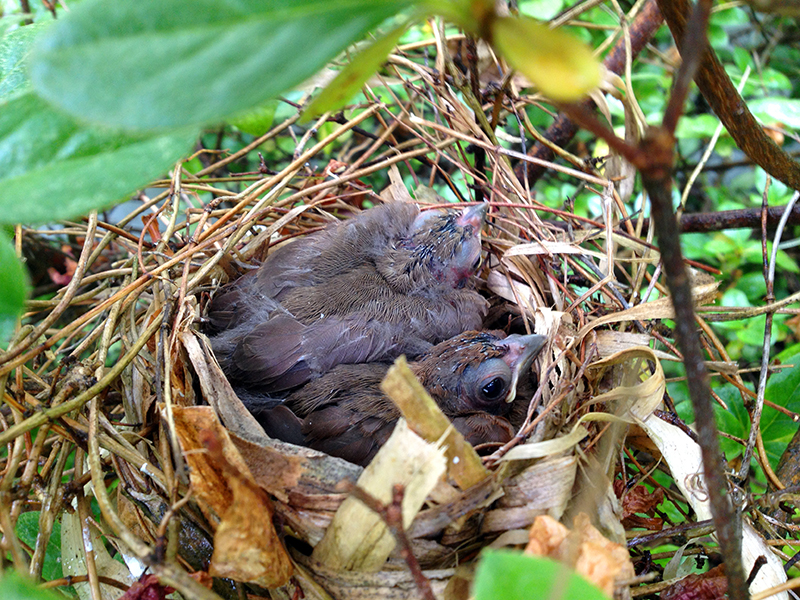
I found these little guys high in the big azaleas by the garage. It’s been a challenge to get a good photo of them—when disturbed they tuck their heads into the nest and flatten their bodies. Here’s their nest ten days earlier, for those of you who are working on your nest/egg i.d. skills:

This is the first cardinal nest that I’ve found, and it’s right in my yard. As everyone’s sounding alarms about the decline of our native songbird populations, because of habitat loss and home and agricultural pesticide and herbicide use, I am very happy to be fighting back by maintaining a property that supports birds’ needs well enough to encourage them to breed here. To some people a bird’s nest is just a bird’s nest, but to me it’s a sign that I must be doing something right on this tiny scrap of land I’ve chosen to take care of.
June 6th, 2014 §
March 16th, 2014 §
As expected, the eggs under the broody hen began hatching this morning. I was outside doing chores and cleaning up the garage for a long time and heard nothing. I finally peeked under the hen and all these teetering yellow fluffballs started peeping. My heart almost burst from a combination of gratitude, excitement, and awe.
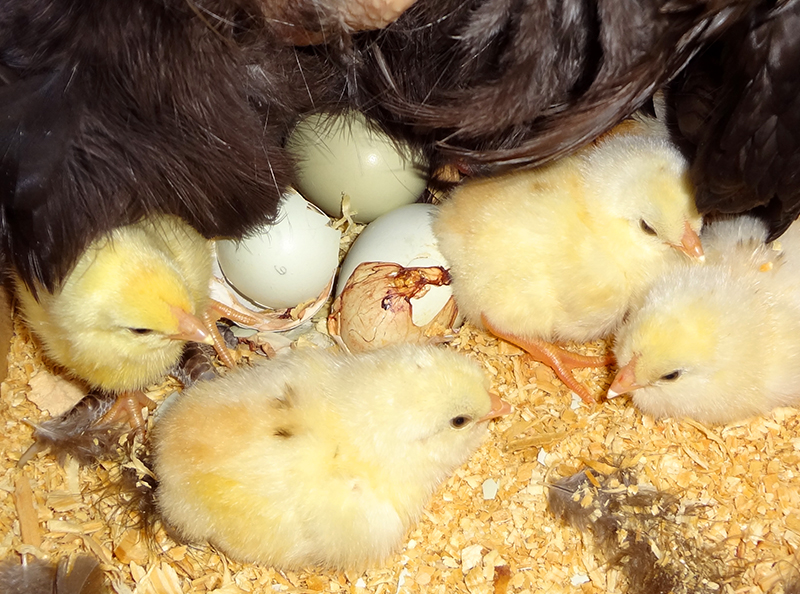
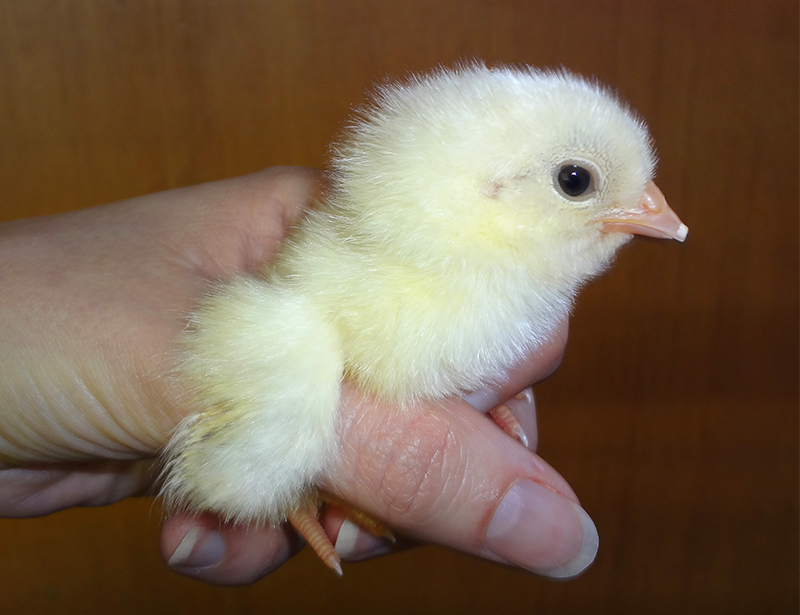
I can’t really explain this emotion I get from hatching chicks, but it’s addictive and drug-like and makes me feel better than few other things. I suspect it stems from bearing witness to the divine, to seeing something so commonplace and taken-for-granted as a chicken egg turn, in just twenty days, into a walking, chirping, perfectly formed and bright-eyed living being.
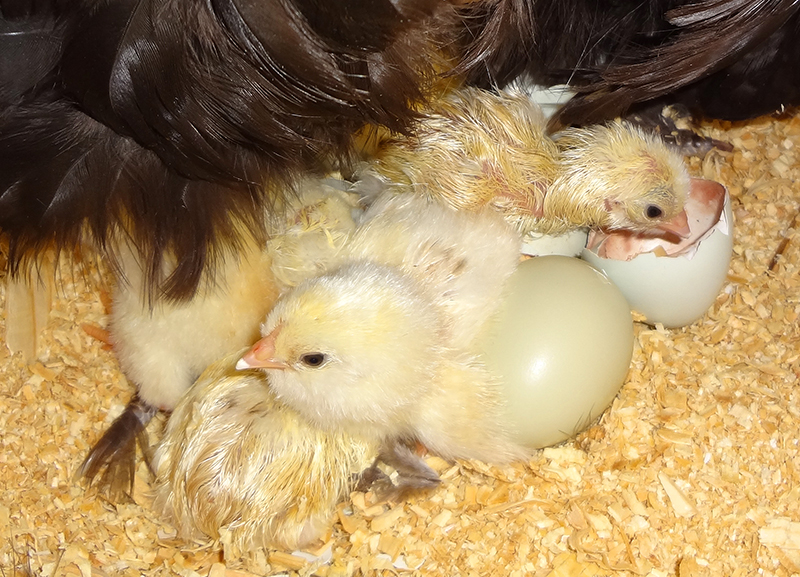
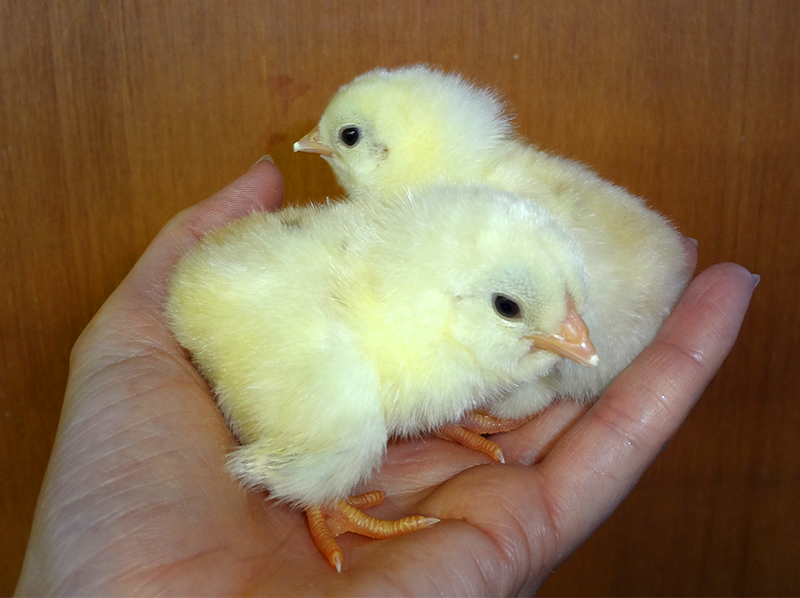
I don’t consider myself particularly religious, and I don’t have children and probably never will. But I imagine that what I feel watching these chicks develop in their eggs and hatch is a microcosm of both experiences. A microcosm of a miracle. So infinitesimal, and so huge.
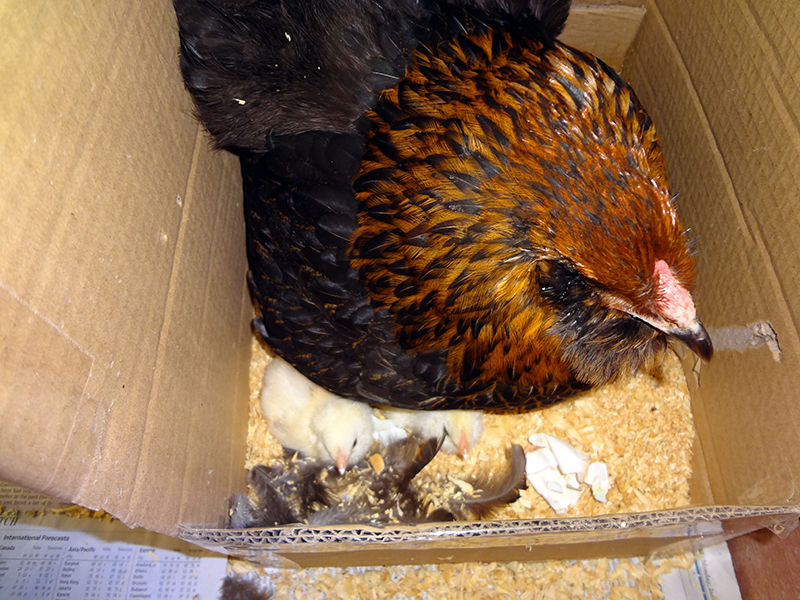
July 11th, 2013 §
I’m getting tired of writing about chicks, and you’re probably tired of reading about them. So let’s investigate this totally uninteresting gas tank, which sits by my chimney and powers my stove.
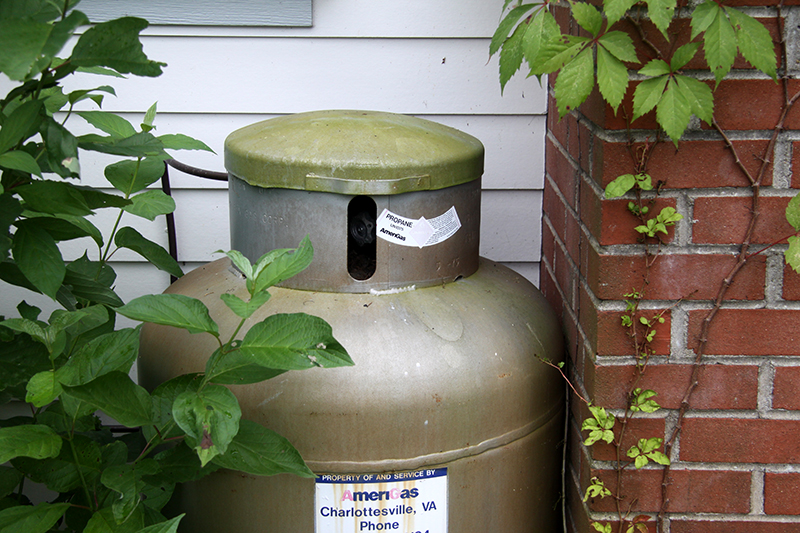
Hark, what’s this?
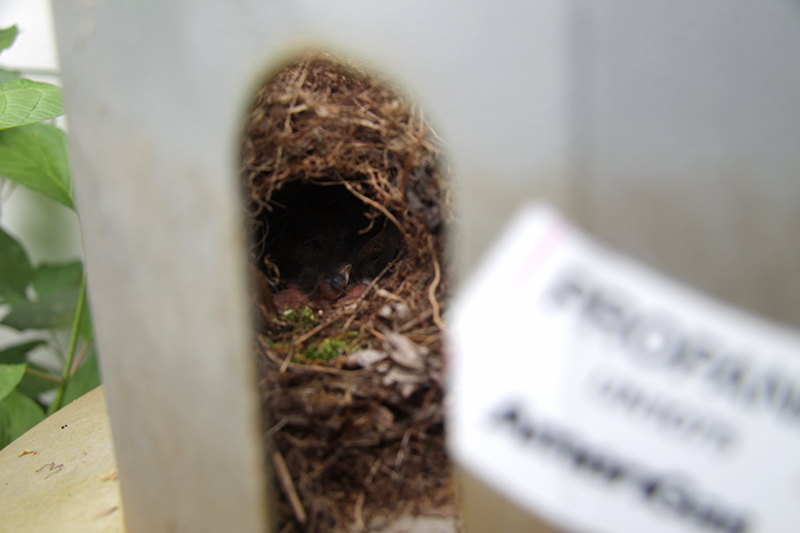
Let’s lift the lid and see.
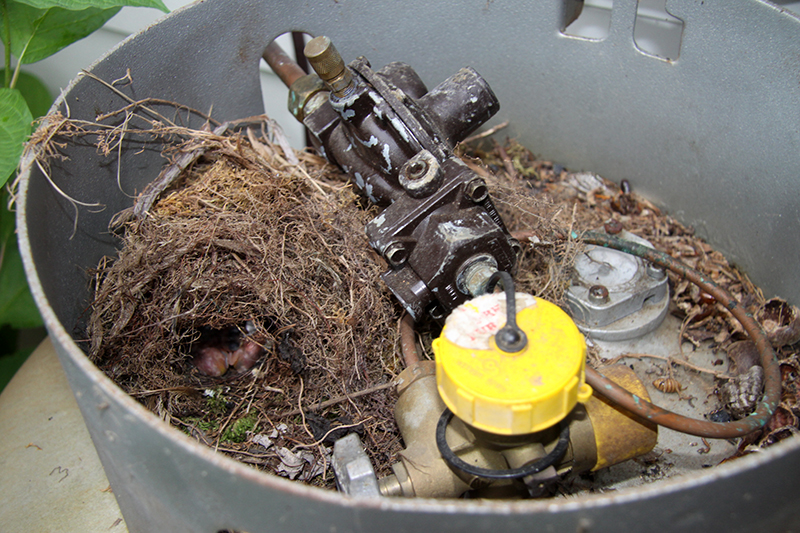
Gah! More chicks! They’re everywhere!
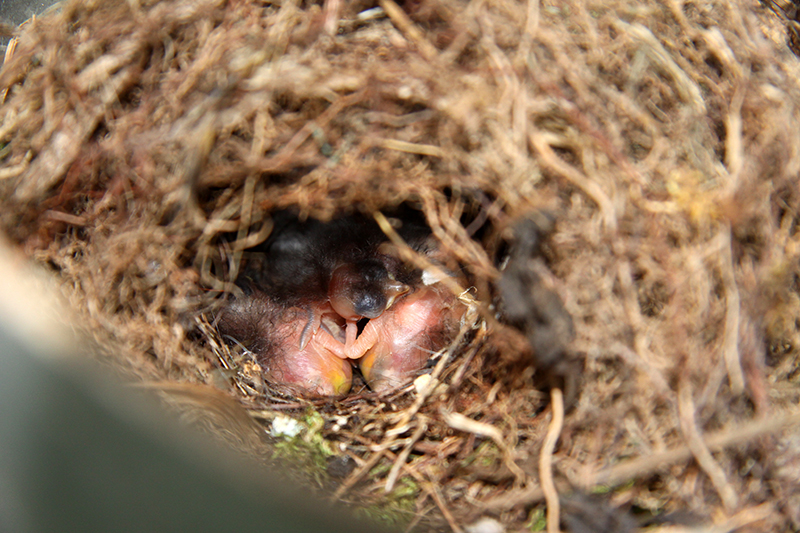
These are little wren babies. The gig was up today when I saw their parent fly out of the tank. So many chicks, all over the place. I’m going crazy, hearing peeping noises inside my head. Yesterday the most recently fledged bluebirds were all in the birdbath with their dad, and I saw him up in the oak tree feeding one a worm. Another male bluebird keeps investigating the wellhouse eaves, which were only recently vacated by this spring’s starling fledglings, looking for a place to nest. And you thought we could take a break from chicks! It’s high summer in Virginia, and new life is inescapable.
July 10th, 2013 §
There were no new babies born overnight, but around noon today I found a broken open Coronation Sussex egg. The embryo inside was well developed but still had a lot of yolk, so I know it wasn’t ready to be born. It was the egg that Dahlia chucked out of the nest on the first day of the hatch. Perhaps she did that because the embryo had died, or maybe it was out of the nest long enough to chill and stop developing. We’ll never know.
There was a Black Copper Marans egg in the process of hatching under Dahlia. It seemed to be struggling a bit, but I left it alone. When I came back hours later there was a new chick.
Once the chick had dried, I inspected it. Unfortunately it was born with a severe birth defect. It has only one eye, and its beak is misaligned.
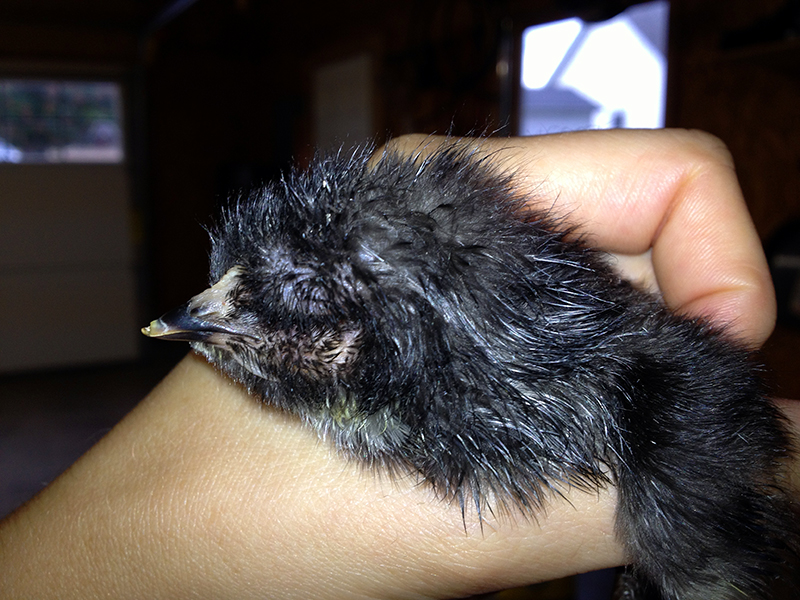
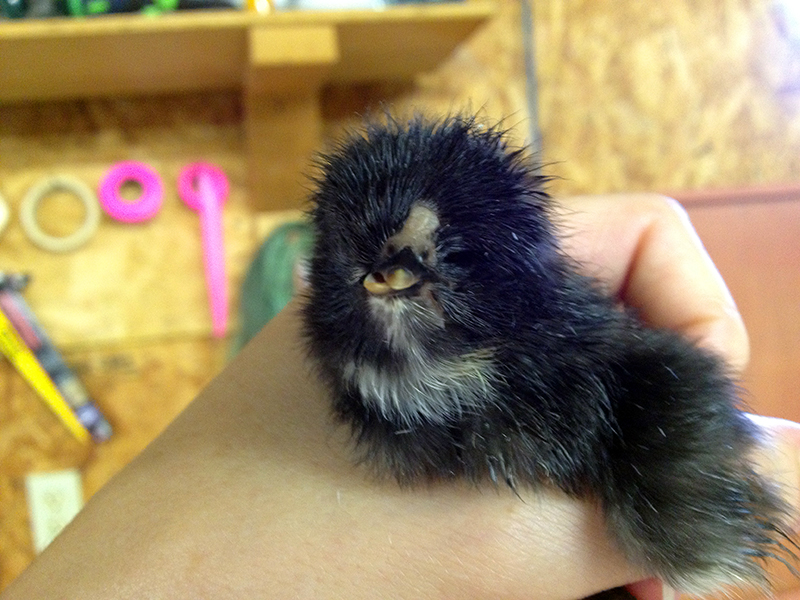
I suspect that there is no sight in its one eye, as it struggles to open that eye and doesn’t seem to respond to any visual stimuli.
I did some quick research and the prognosis isn’t good for a bird born with this defect. Some people can keep them alive with careful attention to making sure the bird gets enough to eat, but most people cull chicks born like this. That is what I plan to do.
The deformed chick, did, however, give me a good opportunity to get all six healthy chicks under Dahlia. I knew going into this that if I had just a few chicks, I would try to combine them under one hen. It didn’t make sense to double the work and cleanup of managing two coops of babies, and I knew that the older the birds got the more trouble I would have when it came time to combine both groups of babies. As I already know how potentially fraught introducing new birds to the main flock is, I wanted to minimize one extra step in the development of a new pecking order.
I chose to take the chicks away from Oregano because of the two birds, she seemed the less serious about mothering. She had pecked at the toes of the Coronation Sussex baby when it was brand-new, and today she was off the nest several times during the day, eating, drinking, and trying to dust bathe in the pine shavings. Not that one can blame her! Perhaps she knew the hatch was done and was trying to get her babies to follow her out to food and drink, but I didn’t get that sense from her.
I was stressed to put Oregano’s three chicks under Dahlia, but I did it one at a time and she didn’t bat an eye. The chicks dove right under her breast like they’d always been there, and there’s been no looking back. In fact, she led her babies off the nest this afternoon, leaving the deformed chick in the nest.
I took the unhatched eggs from Dahlia’s nest and added them to Oregano’s along with the deformed chick. I figured she’d go less crazy if she had a chick under her than if she had nothing and could hear chicks next door. But who knows, maybe she wouldn’t care? Anyway, the plan now is to give any remain eggs another day under Oregano to try to hatch, though I doubt any will, and then return Oregano to the main flock. Which might be tough if they see her as an intruder instead of a flock mate. Geez—managing these birds can really be a pain!
But if I get Oregano back with the flock, I should be in the clear. Dahlia can raise six chicks for as long as she likes, and I will deal with whatever comes next when it arrives. The good news is the six chicks now with Dahlia have spent the afternoon learning to eat and drink.
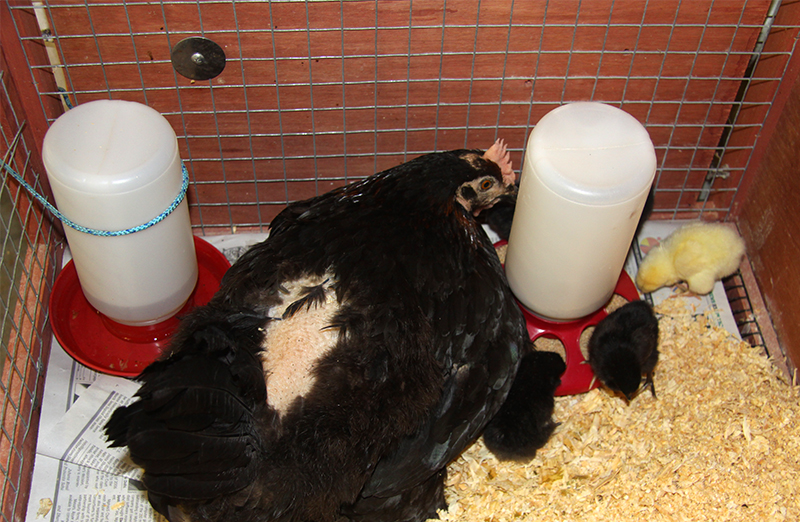
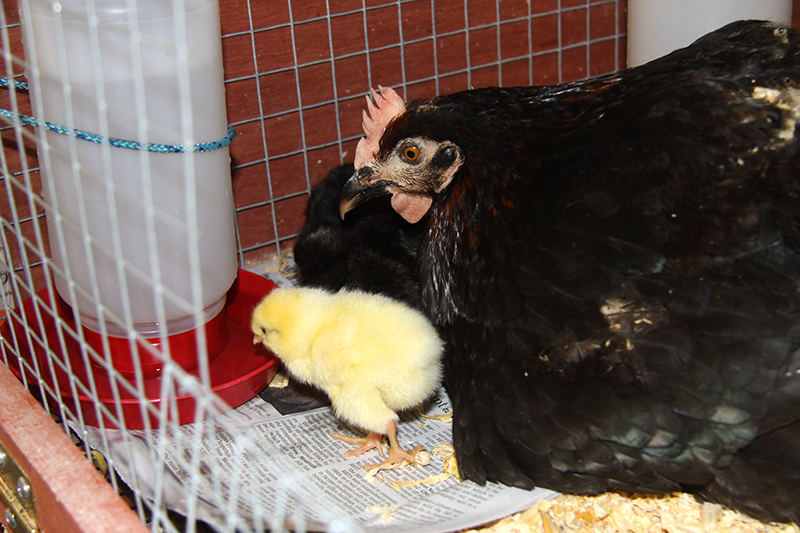
They are very active in the coop, pecking at everything including their mother’s comb (you can see a little blood spot in the photo above), wattles and even eyeballs, and seem healthy and happy. They run around, and when they are tired they dive into their mother’s feathers for a nap. Can you spot the stowaway?
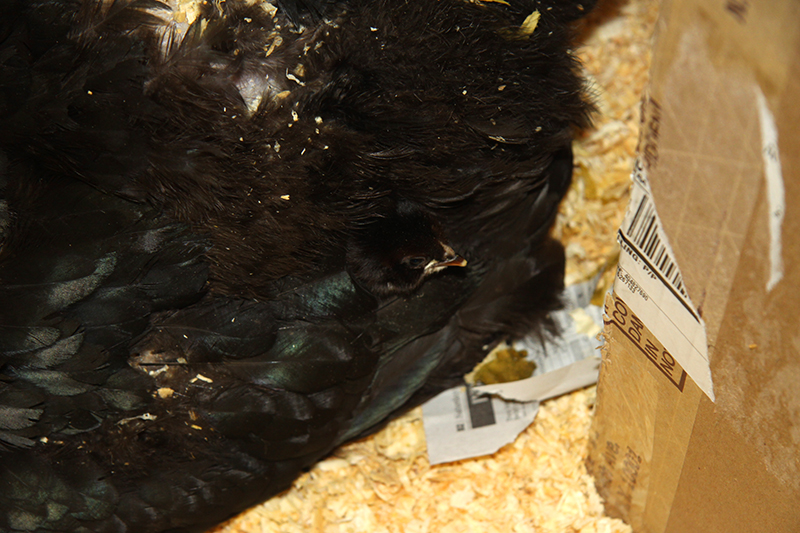
July 9th, 2013 §
There are new chicks, hatched early this evening, under both Dahlia and Oregano. Both are babies from Black Copper Marans eggs. Now each hen has three live babies, for a total of six on the ground. Oregano had one baby that pipped this evening, but it died before making it out of the shell. When I investigated, its yolk hadn’t yet been absorbed. I am starting to think the hot temperatures have affected this hatch, but that’s just a hunch and not substantiated yet with any research.

The chicks that were born last night are very active, hanging out at the front of the next box, pecking at shavings, and interacting with each other. Here are the yellow Coronation Sussex and the barred olive egger/wheaten Ameraucana boy.

They must be starting to think about food. Perhaps tomorrow they will take their first excursion out of the nest box. I am sure both mothers are also ready to get out of the nest. Notice how pale and dehydrated their combs and wattles are. Incubating eggs takes a lot out of a hen as they barely eat and drink just enough to keep from dying. They’ve both lost a bunch of weight—when I feel their chests all their breast muscle mass has shrunk away on either side of the keel bone.
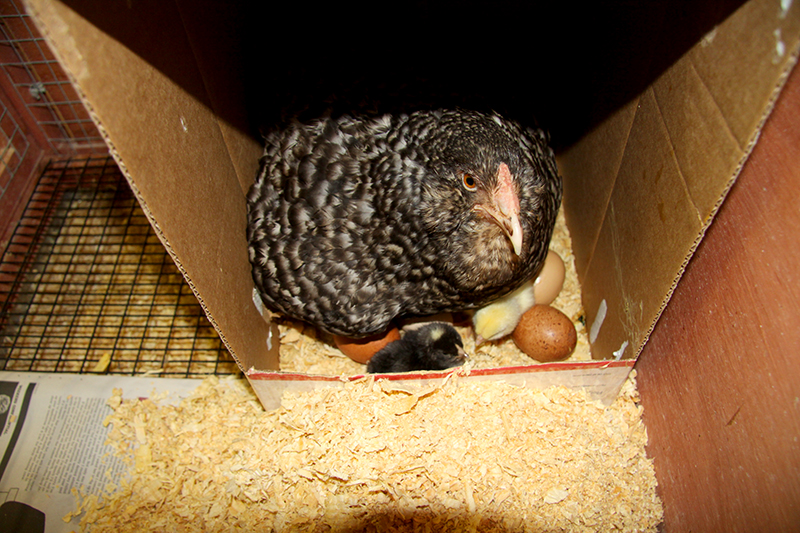
I find it interesting that when the guinea keets hatched last summer, they were way more active, way sooner than the chickens. The guinea keets were still wet from hatching and they’d already begun running out of the nest box. The chicks seem to be rather limp until they fluff up and find their legs. This little one under Dahlia has favored this front corner of the box all day. The chick has a few copper colored feathers, the same tone as mama’s, around its head and sides.
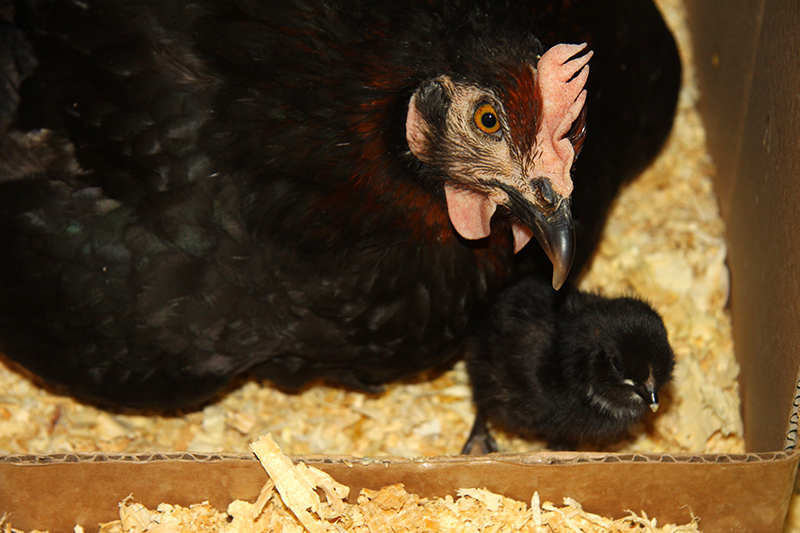
I suspect we might be done with this hatch. There aren’t any more pipped eggs, and nobody cheeped when I tapped on their shell. But we’ll see what the morning brings. I am ready to be done with this hatch phase, with its attendant death and stinky ooze, and on to seeing darling little fluff balls running all around the coop learning to be big chickens.
July 9th, 2013 §
At 8:00 a.m. I went out to check on the chicks. I heard peeping when I opened the garage door, so I knew there were babies somewhere!
Under Dahlia, two black chicks were just about all dried and fluffy. One came from a Black Copper Marans egg, which makes it an olive egger, and the other chick is Lilac’s baby. I saw one pipped egg but didn’t check them all.
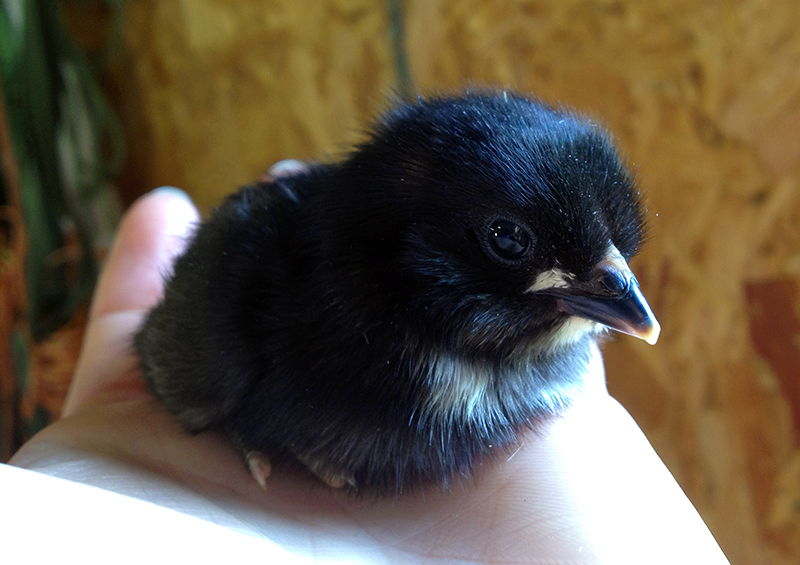
Under Oregano, the barred olive egger, there were two hatched chicks.
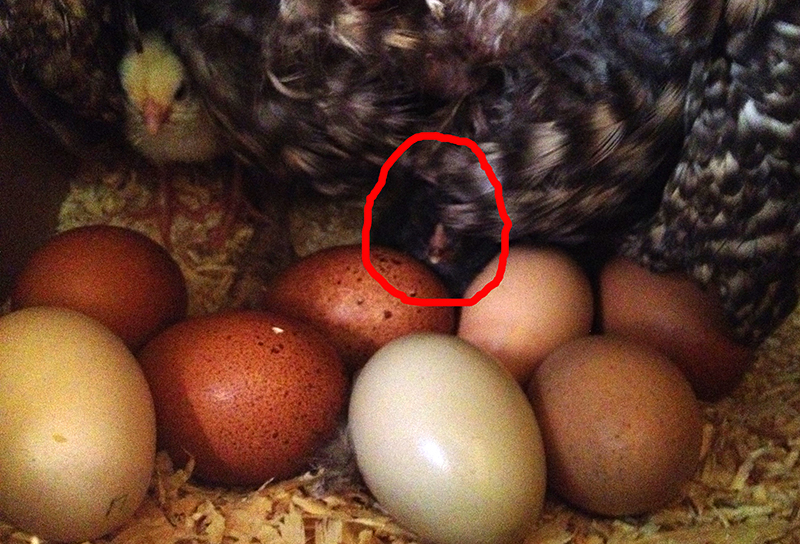
First up is a yellow Coronation Sussex baby!
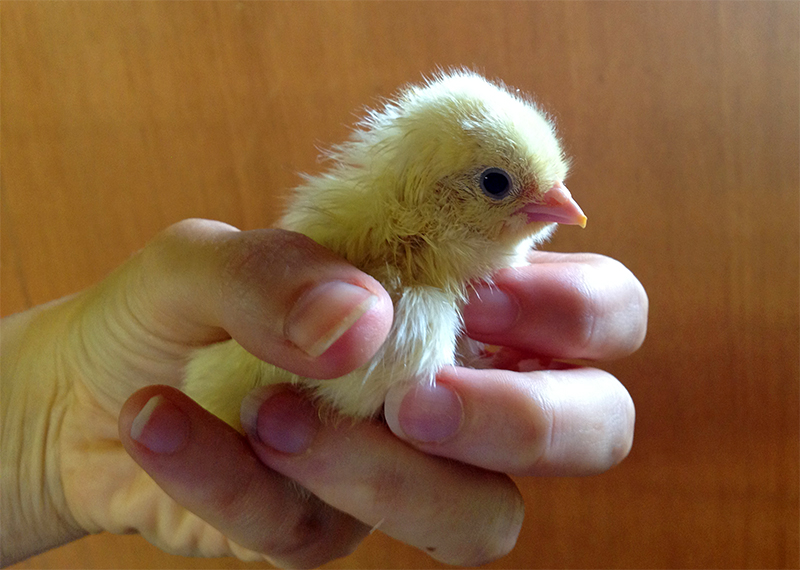
This is pretty exciting. And Oregano’s own egg, the one that journeyed to a Richmond refrigerator and back, had hatched during the night.
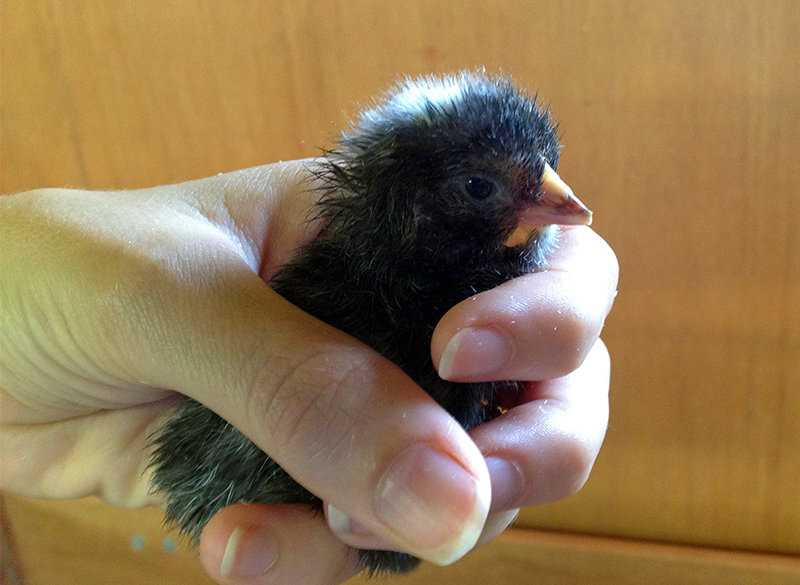
Unfortunately I think it’s a boy, as it has a white spot on its head, a sex-linked characteristic of barred breeds. Too bad I won’t get a chance at a super green egg layer this time around.
Meanwhile, here are the chicks’ empty eggshells. From top, the Coronation Sussex, then the barred olive egger, then Lilac’s egg, and finally a Black Copper Marans egg.
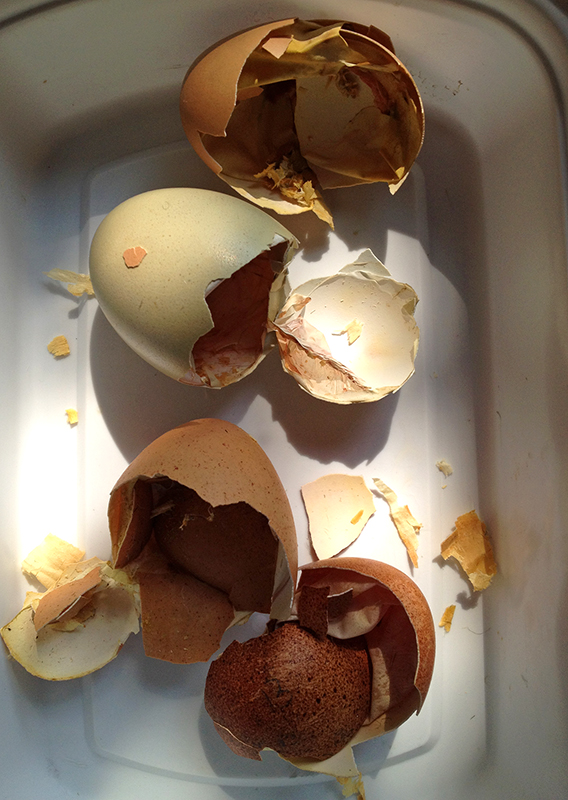
I saw another pipped egg in Oregano’s nest, so I left them in peace to continue hatching. There may be more babies to come, we’ll see.
July 8th, 2013 §
When I got Tuck in from his evening constitutional, around 10:30 p.m., I checked the nursery. There was a lot of action under Dahlia, lots of peeping and I saw a black chick partially emerged from its egg. Of course my phone battery was dead, so after it had charged up I headed back out, around 11:00 p.m., in hopes of getting a photo for you.

A chick! A real, live, healthy, vigorous chick! It obviously had a nice, quick, clean hatch, and was moving around like crazy. In the light of the flashlight, which I held in my mouth to take these photos, it bobbed and ducked and cheeped and burrowed deeper under Dahlia. She seemed to regard it with benign curiosity. Like, what is that? It’s a good thing she will have the whole dark night to get used to the idea of being a mother. Which she will be several times over, if the noises on her nest are any indication.
You can also see in the photo above the egg, on the right, that was pipped in my last post. Not too much development there.
Over in Oregano’s coop, it was much quieter. But, her egg, the olive egg, was definitely progressing. This is somewhat amazing as this is an egg that I put in a carton, carried in a warm car down to Richmond to give to my brother to eat, where it spent several days in a refridgerator before I realized Oregano had gone broody and ceased laying. This egg, and another that traveled with it, plus one I still had at home, were her only hope of biological offspring. So my brother carefully packaged the eggs for a return trip via my dad to Charlottesville, where I placed them back under their mother. One olive egg disappeared during incubation, and the other came up clear when I candled it. Thus I had zero expectation that through all this jostling, temperature change, etc., this egg would hatch, but here it is, tonight, with a peeping baby inside.

And here’s another egg, still pipping and making progress:

All eggs went immediately back under their mothers, and I came in to write this post before bed. I’d be lying if I said my heart didn’t stop seeing that healthy, wet baby under Dahlia. I am not the fainting type, but I felt lightheaded and swoony. I guess that’s what happens when you’re face to face with brand-new, much-hoped-for life. I could only imagine what it would feel like to see one’s human baby. If my reaction to new-born chickens is any indication, am not sure my heart would survive the crush of emotion.
I hope that the first check in the morning reveals nests full of fluffy, healthy, hungry chicks. That is my dream for tonight.














